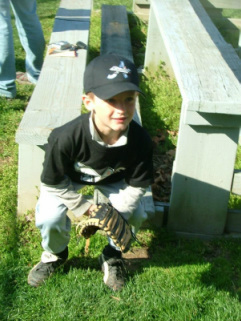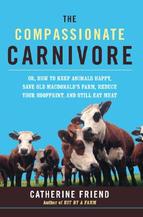 It sounds strange to me now, but a couple of years ago (and for my entire life before that), I thought of food as something to satisfy hunger. Sometimes I thought of it as entertainment (think: a meal on an airplane, popcorn at the movie theater). One day, after listening to one of a health podcasts, or reading a book on healthy eating (I don’t remember exactly), it occurred to me: food is fuel for our bodies. All of a sudden I looked at everything with a new eye. What nutrients did those Wheat Thins have to offer? What ingredients were in my ice cream? (Gottcha – you thought it was just cream and sugar right? Take a look next time.) And I began looking at foods like kale and liver with new interest. We’ve been given directives from the government and our doctors over the last thirty or forty years that are just not keeping up with changes in our food system as it gets bigger and bigger and bigger. “Eat more chicken,” they say. It will lower chances for heart disease. “Eat few eggs and you’ll lower your cholesterol.” But over time the quality of these foods has degraded. Cows and chickens started eating more and more grain and less and less forage (as is natural for them), and the Omega-6 fatty acids (the not-so-good-ones) climbed in comparison to Omega-3s (those are the good ones). Even the quality of soil of conventionally raised fruits and veggies has degraded over the past 30 years. Now, more than ever, it is important to figure out HOW your food was raised. In fact, the meat from our grass fed cows might just be as low in fat and higher in Omega-3 fatty acids than that conventionally raised chicken at the grocery store. So quality definitely matters when you are doing your food shopping. But thinking about nutrients doesn’t stop at conventional vs. organic. Our kids are learning how to eat with every meal, every morsel they put in their mouths. They’re learning emotional relationships about food, and they’re learning habits that will stick with them for a lifetime (or they’ll likely spend a lifetime trying to change them). In the age of high fructose corn syrup, low quality ingredients are everywhere -- and nowhere more than in pre-packaged post-game athletic “snack”. But luckily, we just have to retrain our eyes because high quality ingredient snack food also abounds. Can I introduce you to a banana? How about a handful of nuts (or, my kids’ favorite, a mix of nuts, dried fruit and dark chocolate)? Is that post-game snack meant to be a reward? I think the reward after a baseball game is that you had a great time playing baseball! Let’s use that post-game snack to teach our kids about how to refuel their bodies after a workout. And maybe we’ll convince them at a much younger age than I learned that food is fuel.
1 Comment
 Since I’ve become a farmer, so many things about the food industry have come to light. It has drastically changed the way our family eats. It’s changed us so much that I have become passionate about spreading word about why we raise animals the way we do here at Maple View Farm, and I want to evangelize the world with the message about responsible meat eating. I’m sure there are millions of family farmers out there, raising small amounts of animals, who feel the same way. Lucky for us, Catherine Friend can be our voice. I don’t know why I only discovered this book now. I’ve read everything by Joel Salatin and Michael Pollan (and loved it all), but Friend speaks for me, as a farmer, in a way I haven’t yet heard. As I read her book The Compassionate Carnivore, it’s like she took words right out of my mouth (and added oodles and oodles of facts and research to back them up). My favorite part so far is her discussion about how much meat is wasted. It was actually a hard chapter to read for someone who takes care of animals every single day of the year. To think that anything would be wasted makes me want to cry. Here amazing statistics will hopefully open eyes and make people more aware of the affect they have on our food system and all of these beautiful animals that are a part of it. The great news, as always – you have complete control to choose what you buy and therefore choose the kind of life you want the animals you eat to live. For your health and for theirs. I’ve written about raising animals on a pasture-based system before, but Friends book makes the case black and white. Although, it should come with a warning (or a challenge maybe?): Seek out a farmer near you growing animals with sunshine, fresh air, and grass, and look those animals in the eyes and smile. Then head over to their Farm Store and buy some meat for dinner. Those animals will thank you for it. |
AuthorA blog about farming and food. Kate Bogli owns and operates Maple View Farm, raising livestock and growing veggies, with her husband Jason. The farm has been in his family for 65 years. Archives
October 2021
Categories
All
|
 RSS Feed
RSS Feed